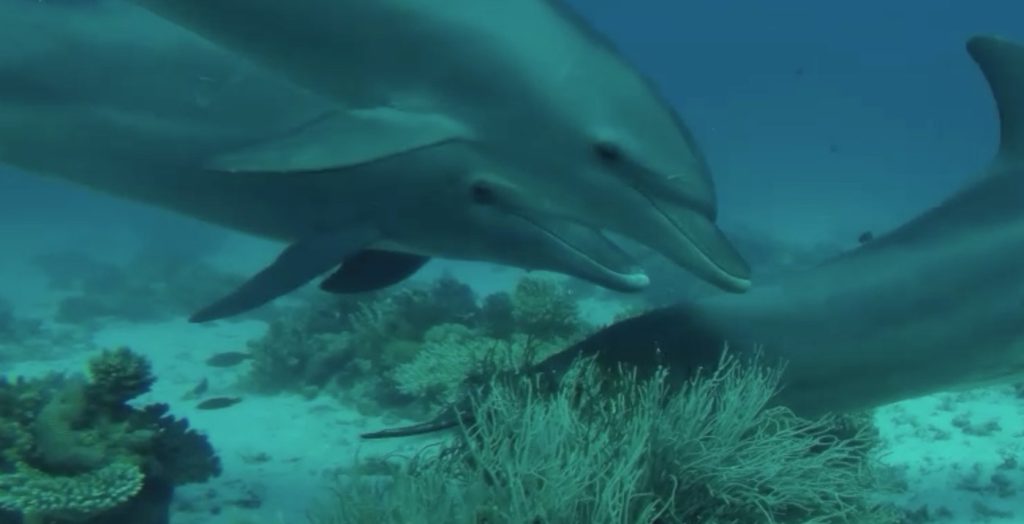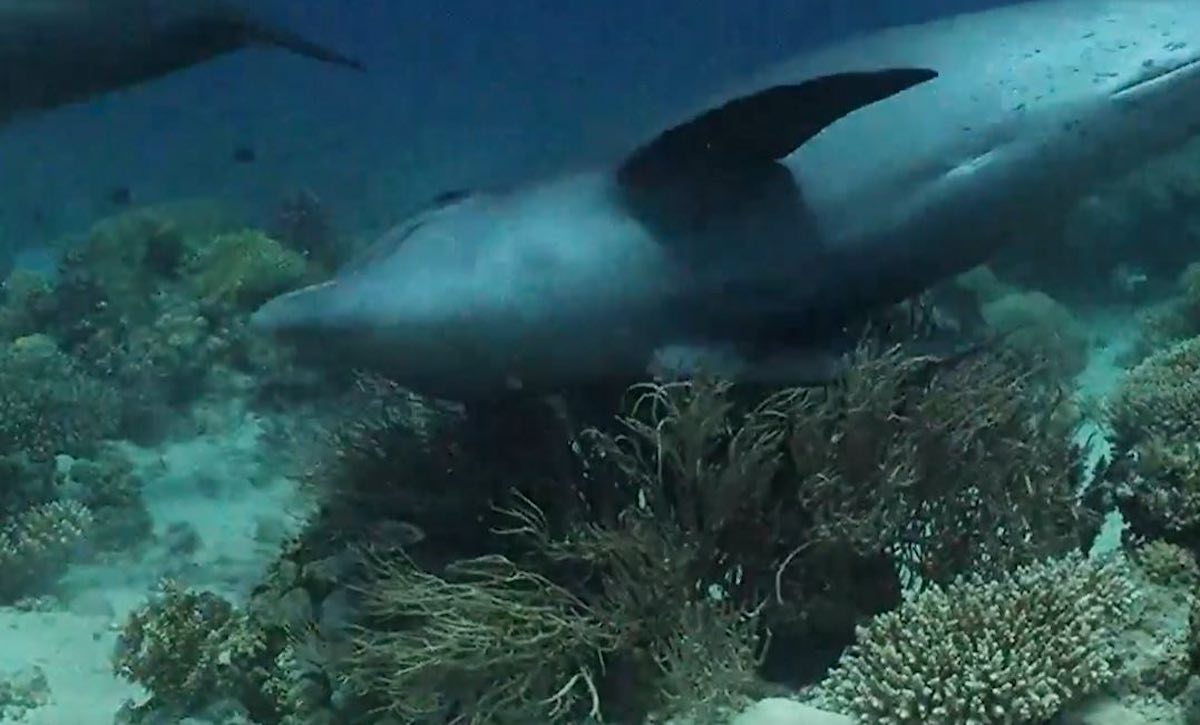
Amazing footage shows dolphins rubbing against a specific type of coral—possibly to extract healing elements that will keep their skin healthy.
Researchers say it is the dolphin equivalent of “showering” after getting out of bed.
If a human comes down with a rash, they might put ointment on it. Similarly, Indo-Pacific bottlenose dolphins get skin conditions, and a new study shows they, in essence, are self-medicating by lining up (nose-to-tail) to rub themselves against corals.
Researchers have now shown that the corals have medicinal properties, suggesting that the dolphins are using the marine invertebrates to medicate skin conditions.
Thirteen years ago, co-lead author Dr. Angela Ziltener, a wildlife biologist at the University of Zurich in Switzerland, first observed dolphins rubbing against coral in the Northern Red Sea, off the coast of Egypt.
She and her team noticed that the dolphins were selective about which corals they rubbed against, and they wanted to understand why.
“I hadn’t seen this coral rubbing behavior described before, and it was clear that the dolphins knew exactly which coral they wanted to use,” Dr Ziltener said. “I thought, ‘There must be a reason.’”
Most dolphin research is conducted from the surface of the water, but because Dr. Ziltener is a diver, she was able to study the dolphins up close.
CHECK OUT: Dolphins Have Similar Personality Traits to Humans, Study Finds
It took some time to earn the trust of the pod, which she was able to do in part because the dolphins weren’t phased by the large bubbles released by her air tank. Once the pod allowed her to visit them regularly, she and her colleagues were able to identify and sample the corals that the dolphins were rubbing on.
Dr. Ziltener and her team found that by repeatedly rubbing against the corals, Indo-Pacific bottlenose dolphins were agitating the tiny polyps that make up the coral community, and these invertebrates were releasing mucus.
To understand what properties the mucus contained, the team collected samples—of the gorgonian, leather, and sponge corals—and analyzed them using state of the art equipment. Their findings were published in the journal iScience/Cell Press.
Study lead author Professor Gertrud Morlock and her team found 17 active metabolites with antibacterial, antioxidative, hormonal, and toxic activities.
This discovery of the bioactive compounds led the team to believe that the mucus of the corals and sponges is serving to regulate the dolphin skin’s microbiome and treat infections.
RELATED: Size Doesn’t Matter to a Dolphin Mom As She Adopts a Whale Calf
“Repeated rubbing allows the active metabolites to come into contact with the skin of the dolphins,” said Professor Morlock, an analytical chemist and food scientist at Justus Liebig University in Germany. “These metabolites could help them achieve skin homeostasis and be useful for prophylaxis or auxiliary treatment against microbial infections.”
The reefs where the corals are found are important places for the local dolphin populations—where they go to rest and to have fun.
“Many people don’t realize that these coral reefs are bedrooms for the dolphins, and playgrounds as well.”
In between naps, Ziltener says the dolphins often wake to perform the coral rubbing behavior.
“It’s almost like they are showering, cleaning themselves before they go to sleep or get up for the day.”
Watch the video below…
SHARE This News From the Deep Blue Sea With Ocean-Loving Pals…




















